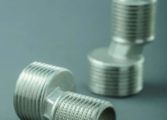Basketball Ball: A Comprehensive Guide to the Iconic Sports Equipment

Introduction
Basketball is a popular sport that captivates millions of players and fans worldwide. At the heart of this game lies the basketball ball, an essential piece of equipment that sets the stage for exhilarating matches. In this article, we will delve into the intricate details of the basketball ball, exploring its different types, popular choices, quantitative measurements, variations, and historical significance. Whether you’re an avid player or a passionate spectator, this comprehensive guide will deepen your understanding of this iconic sports equipment.
Overview of the Basketball Ball

The basketball ball, often referred to simply as a basketball, is a spherical ball specifically designed for playing the sport. Made from a combination of synthetic materials like synthetic leather or composite leather, the basketball is engineered to endure the fast-paced movements, dribbling, and shooting that characterize the game.
Types of Basketball Balls
There are a variety of basketball balls available, each tailored to specific needs and playing conditions. Here are some notable types:
1. Indoor Basketball Balls: These balls are optimized for indoor court surfaces, typically featuring a softer feel, better grip, and higher bounce. They are designed to minimize the wear and tear caused by constant use on hardwood floors.
2. Outdoor Basketball Balls: Outdoor basketballs are built to withstand rugged terrains, including asphalt or concrete surfaces. They are highly durable, with tougher exteriors and thicker rubber covering to endure harsh outdoor conditions.
3. Training Basketball Balls: These balls are specifically designed to help players improve their skills. They often feature enhanced grip patterns, innovative construction, or size variations to focus on specific aspects of the game, such as shooting or ball handling.
Popular Basketball Ball Choices
Several basketball balls have gained significant popularity among players and fans. Some of the most prominent choices include:
1. Spalding NBA Official Basketball: Used in the NBA, this ball is renowned for its unmatched quality and performance. With a microfiber composite leather cover, enhanced grip, and consistent bounce, it provides an authentic playing experience.
2. Wilson Evolution Indoor Basketball: A favorite among high school and college players, this ball features a moisture-wicking cover, cushioned core, and high-performance composite leather. It offers excellent grip and control, ensuring optimal playability.
Quantitative Measurements of Basketball Balls
To ensure fairness and uniformity, basketball balls adhere to specific quantitative measurements. The International Basketball Federation (FIBA) and National Collegiate Athletic Association (NCAA) regulate these dimensions. Some key measurements include:
1. Diameter: The official diameter of a basketball ball is 29.5 inches for men’s games and 28.5 inches for women’s games. This standardized size ensures consistency across different leagues and competitions.
2. Weight: A regulation basketball ball weighs approximately 22 ounces for men’s games and 20 ounces for women’s games. This weight allows for proper handling, shooting, and control during gameplay.
Distinguishing Different Basketball Balls
Basketball balls can vary in their characteristics, which can have an impact on the game. The following factors often distinguish different basketball balls:
1. Grip: The grip offered by a basketball ball is crucial for players to maintain control during dribbling, passing, and shooting. The texture, pattern, and tackiness of the ball’s cover contribute to its grip quality.
2. Bounce: The ability of a basketball ball to provide consistent and predictable bouncing is essential for gameplay. Different balls may offer variations in bounce height, influenced by factors such as internal bladder material and inflation pressure.
Historical Overview of Basketball Ball Advancements
Throughout history, basketball balls have undergone significant transformations, adapting to the evolving sport. Here’s a look at some historical advancements and their benefits and drawbacks:
1. Leather Balls: In the early years of basketball, leather balls were commonly used. While these balls provided good grip and feel, they absorbed moisture, making them heavy and slippery in wet conditions.
2. Synthetic Leather: With the introduction of synthetic leather balls, manufacturers addressed the drawbacks of leather balls. Synthetic materials offered improved durability, better grip, and moisture resistance, ensuring consistent performance in various conditions.
3. Composite Leather: Composite leather balls further enhanced the durability and texture of basketballs. These balls featured a mix of synthetic materials, providing superior grip, enhanced control, and increased longevity compared to traditional leather or synthetic balls.
Conclusion
The basketball ball is the core element of the thrilling sport of basketball. From the early leather balls to the modern composite leather balls, this essential piece of equipment has undergone numerous advancements. By understanding the different types, popular choices, quantitative measurements, distinguishing factors, and historical advancements, players and fans can appreciate the intricacies of the basketball ball. So, whether you’re hitting the court or cheering from the sidelines, the basketball ball will continue to be a symbol of the sport’s excitement and unity.
















































